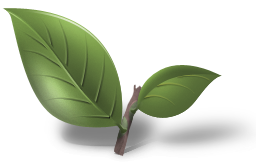Yixing clay potter Lin Hanpeng explains how he picks Dahongpao Clay in our latest blog post:
https://mudandleaves.com/blogs/teatime/ ... -and-aging
Picking Dahongpao Clay
- mudandleaves
- Vendor
- Posts: 326
- Joined: Mon Dec 11, 2017 10:50 pm
- Location: Guangzhou, China/Ottawa
- Contact:
There are literally 1000s of antique Zhuni teapots around, in private and public collections all over Asia. Actually, almost any pot that is red, is Zhuni, Hongni is much harder to find in old teapots. Prices are high, but if you’d wanted old Zhuni, there are loads to be had (Old Zhuni will be a blend though, as firing pure Zhuni was prone to destroying the pots).“Lin: Both raw zhuni ore and zhuni dahongpao ore are rare. Very few examples of zhuni teapots have been passed down from long ago, because even then zhuni was very rare.”
- mudandleaves
- Vendor
- Posts: 326
- Joined: Mon Dec 11, 2017 10:50 pm
- Location: Guangzhou, China/Ottawa
- Contact:
To which hongni are you referring? Da Hongni, Xiao Hongni, hongni blends?Bok wrote: ↑Mon Sep 05, 2022 9:12 pmThere are literally 1000s of antique Zhuni teapots around, in private and public collections all over Asia. Actually, almost any pot that is red, is Zhuni, Hongni is much harder to find in old teapots. Prices are high, but if you’d wanted old Zhuni, there are loads to be had (Old Zhuni will be a blend though, as firing pure Zhuni was prone to destroying the pots).“Lin: Both raw zhuni ore and zhuni dahongpao ore are rare. Very few examples of zhuni teapots have been passed down from long ago, because even then zhuni was very rare.”
https://mudandleaves.com/blogs/teatime/ ... lay-hongni
Not sure what the exact tally of antique zhuni teapots is, but zhuni makes up a comparatively very small amount of the available zisha.
Not all antique zhuni is what we think of today as zhuni, besides blends, prior to the Republic, all red clay (including zisha hongni) was called "zhuni." The term "hongni" started to be used during the Republic to distinguish one color of clay (zhuni) from other red clays (hongni).
As you say, in the old days most clays were not pure, so which kind of Hongni it was, is kind of impossible to see from the finished product and it was also not talked about by the people who made it back then. Not sure those names even existed back then…
Visually, you can see and feel very clearly though that it is Zhuni.
Per a rough observation of the antiques I have seen over the years, about 1 in 30 is Hongni-kind. Much, much easier to find Zhuni. Most of the Hongni has been used during early F1 factory, to the point that it is now actually rarer to find than Zhuni, thanks to their streamlined mass production…
Visually, you can see and feel very clearly though that it is Zhuni.
Per a rough observation of the antiques I have seen over the years, about 1 in 30 is Hongni-kind. Much, much easier to find Zhuni. Most of the Hongni has been used during early F1 factory, to the point that it is now actually rarer to find than Zhuni, thanks to their streamlined mass production…
